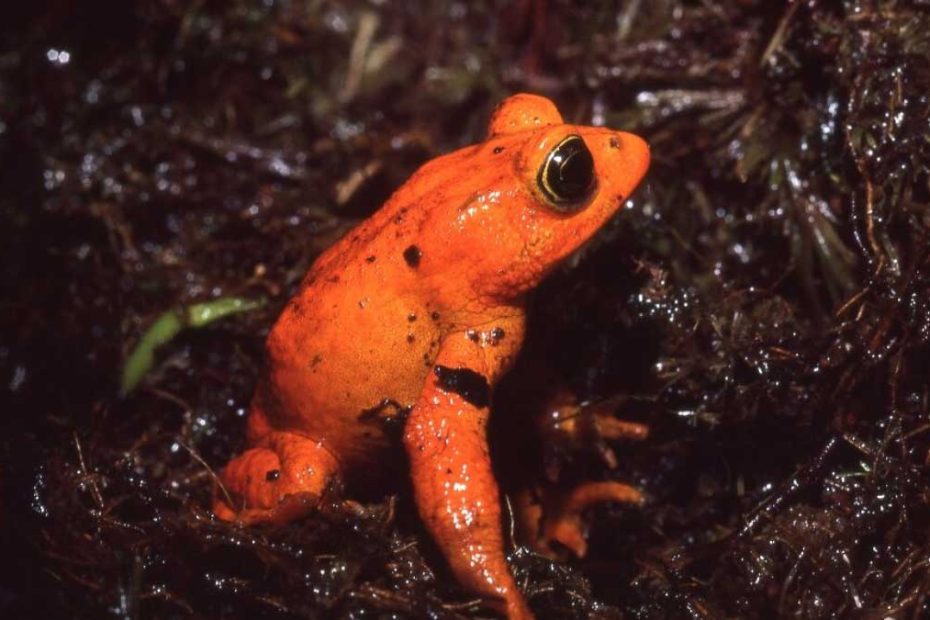The Golden toad (Incilius periglenes) is a small, bright-colored toad that once used to roam the cloud forests of Costa Rica. Its striking golden-orange hue earned its popularity among biologists and frog enthusiasts and made it an icon of amphibian consecration. At the same time, it is evident of the rich biodiversity in the Monteverde region.
Unfortunately, this golden toad is believed to have gone extinct in the late 1980s, with the last recorded signings of this unique toad being in 1989. Its disappearance has raised concerns regarding the global decline of the amphibian populations and served as a perfect example of threats many other amphibian species may face all over the world.
This article pays homage to the lost golden toad species. We will explore its impactful presence on our planet and shed light on the various factors that caused it to go extinct. We’ll also examine additional aspects of this toad such as its ecosystem, where it lived, whether there are any golden toads left in the wild, and more.
Golden Toad the Lost Species Overview:
The Golden toad was restricted to the cloud forest above Monteverde City in Costa Rica. It has not been spotted in its range since 1989.
Its native habitat was a small range (around 10 km sq.) and high altitude area. The forests also go by the name elfin forests and are characterized by small trees, epiphytic plants galore, and clouds, all of which give them a primeval look and feel.
Its disappearance was both mysterious and rapid. The period between the discovery of this species by the scientist (i.e. 1964) and the last sighting (1989) involves only 25 years.
Since the golden toad’s disappearance, it has become significant as the icon for the decline of amphibians all over the world.
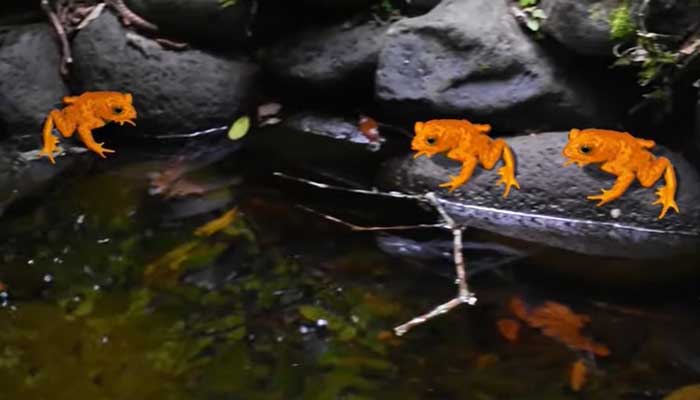
One of the things that make this toad unique is its bright and shiny coloration, which almost made people believe it looked artificial. Also, the toad exhibited high sexual dimorphism, with males and females looking completely different in appearance.
While the male displayed a magnificent golden-orange skin hue, the female had a black hue with scarlet blotch marks with yellow edges. It was also larger than the male.
Breeding season for these toads occurred from April to June when the rainfall was at its peak. The heavy rainfall would fill hollows around tree bases as well as other natural depressions with water. These would then create the ideal breeding sites.
Golden toads would then gather around these pools in large numbers for mating purposes.
One thing to note is that male golden toads largely outnumbered females in a ratio of 8 to 1. As such, males had to fight for a chance to mate. You’d find any female within the breeding grounds being fought for by multiple suitors.
Males would become over excited during this season and would try mating anything that moved, including their fellow males.
A group of 4 to 10 males would grab each other to form a toad ball whose significance was unclear—it’s believed the female would have been in the middle of the ball but would later slip, leaving the suitors stuck together.
The male who put up a good fight was able to hold the female in the amplexus position and fertilize her eggs. Even then, a male would still come and try to separate the engaged couple to get a chance to mate as well.
Females would lay around 200 to 400 eggs in long strings deposited in the breeding pools.
Unlike most of the toad species, these toads would lay a few big eggs that were yolk-packed as opposed to many small eggs in other species.
It’s believed that these toads adopted this breeding strategy due to the small pools they used for breeding grounds.
Since the pools won’t last long, the tadpoles had to develop quickly into toadlets and the plenty of yolk in the eggs acted as the fuel for their rapid development.
Tadpoles would only spend around 5 weeks in the pools after hatching before they started developing limbs, which prepared them for life on the land.
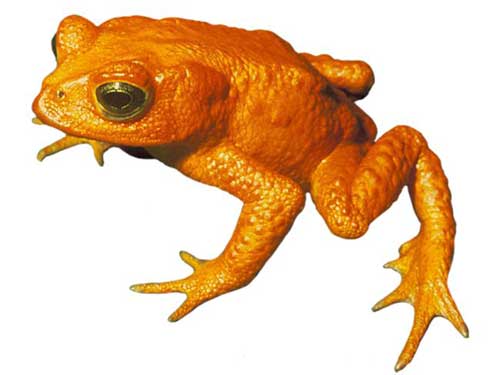
There’s little information about this toad’s diet as it was primarily observed during the breeding phase and they would live quite secretive lives inside their forest habitats.
However, judging by their small size, it is likely these toads would feast on smaller invertebrates.
Unfortunately, the cause for the disappearance of this species of toads is still unclear. But there are several theories explaining their rapid disappearance as we’ll discuss in the next section.
Why did the Golden Toad go Extinct?
As we mentioned above, the disappearance of the golden toad was rapid and mysterious. Western scientists discovered the species for the first time in 1964 in large numbers in its native habitat.
But by the year 1987, only around 1500 adults were observed. Only 10 were found in 1988. And only one adult could be seen in 1989.
Quite mysterious, right?
It’s still a mystery to scientists what exactly could have caused such a massive population crash for these toads in such a short period of time.
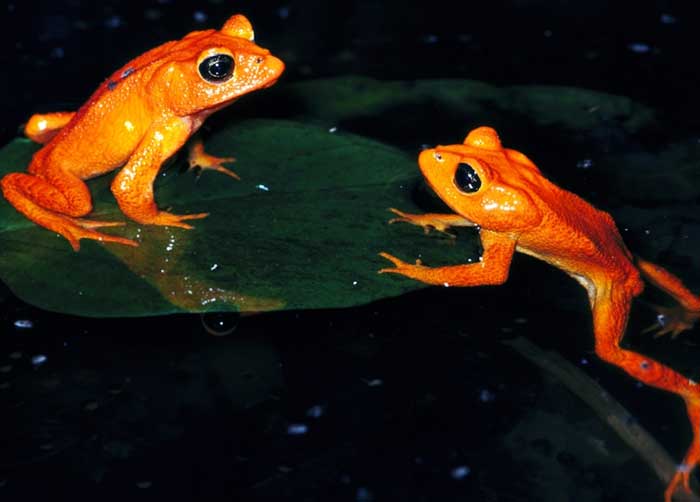
However, several theories have been put forward to try to explain what might have happened to this species. These include:
- Special breeding requirements: One of the possible explanations behind the disappearance of this toad species is tied to their special breeding requirements. This involves the temporary pools formed following rainfall and the narrow window of opportunity. As such, just an erratic year of weather conditions may have completely thwarted their chances of conducting a successful breeding season.
- Unique habitat requirements: Another possible reason behind the species going extinct is that they have quite specific habitat requirements and occupy pretty small ranges. As such, one little environmental change in their environment leaves them with nowhere to go, exposing them to potential extinction.
- Increasing amounts of UV radiation: Some scientists suggest increased amounts of UV radiation as another potential cause behind the extinction of these toads. The increasing levels of this radiation penetrating the atmosphere may have harmed them and led to their demise. However, given that these toads lived in dense forests that were covered with clouds during the breeding phase, it is less likely the radiation may have caused their disappearance.
- The spread of chytrid fungi disease: The chytrid fungi is a deadly fungal infection prevalent among amphibians all over the world. This pathogen is known to quickly destroy amphibian populations whenever it becomes established. Couple this with dryer conditions that may have forced the toads to meet in fewer ponds, and this increases the transmission rate of this disease.
Overall, the devastating chytrid fungus could be partly responsible for the golden toad extinction. There were probably several factors at play causing the demise of these species, including habitat destruction, climate change, and increased UV radiation levels.
Where did the Golden Toad Live?
The golden toad inhabited the Monteverde cloud forest reserve, which is in northern Costa Rica. This native habitat for one of the world’s most unique toad species is a cloud forest that lies to the north of Montverde City.
This forest is characterized by a mist-laden environment, lush vegetation, and a diverse ecosystem.
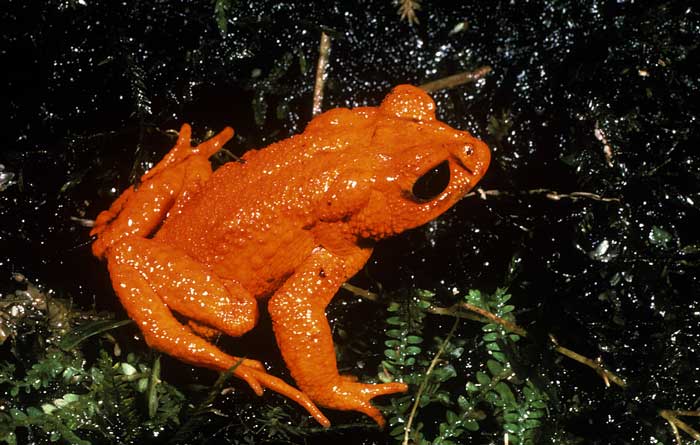
Specifically, the toad inhabited the cool and moist montane habitats within this forest reserve, where the humidity and temperatures provided it with an ideal environment for the species.
Keep in mind that this toad was distributed over a small range of not more than 8 km 2. The species was found at elevations between 2000 and 2100m, which shows it prefers lower elevations.
The golden toad ecosystem’s role in its habitat was to control the insect population by foraging for the small invertebrates, thus contributing to regional ecological harmony.
Participating in the amphibian reproductive cycle also influenced nutrient recycling, further maintaining the health of the ecosystem.
What did the Golden Toad Eat?
As we said earlier, there’s limited information on the feeding habits of this toad as it was primarily observed during the breeding season. However, judging by its small size, we can assume that this toad would consume smaller insects and other invertebrates, including ants, beetles, spiders, etc.
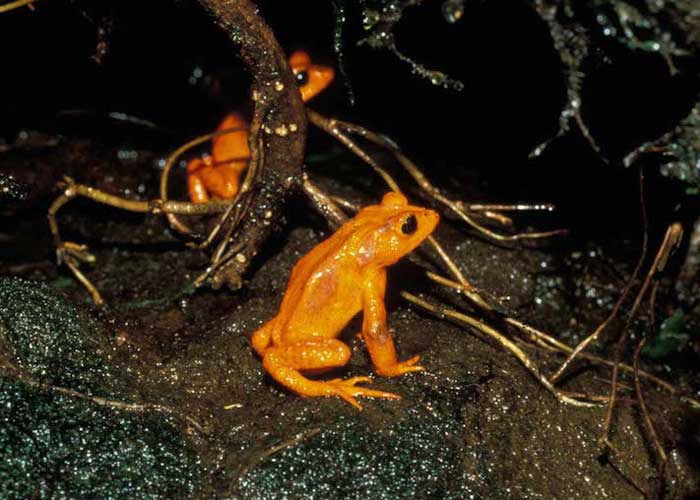
How many Golden Toads are Left?
The golden toads are classified as extinct species, meaning they have completely disappeared in their native habitat.
The last sighting of this toad was in 1989. And since then, it has not been spotted again.
Extensive surveys were conducted in the following years but they all failed to locate any living specimen, leading researchers and scientists to conclude that this species is extinct.
Therefore, it’s safe to say that there are no known golden toads left in the wild.
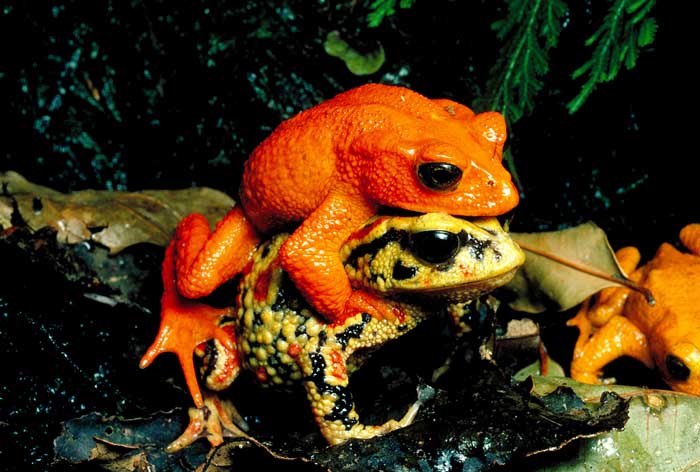
FAQs:
Human-induced factors that may have caused the golden toad to go extinct include global climate change, the introduction of chytrid fungus, and probably habitat loss following deforestation.
The passing of the golden toad will be remembered as an excellent symbol of the broader challenges facing the global amphibian populations. Its extinction will serve as a reminder of ecosystems’ interconnectedness and the urgent need to put in place various conservation efforts to help protect vulnerable species from threats like habitat loss, diseases, climate change, etc.
The gold toad is significant to the scientific world in that it gives us the opportunity to study a beautiful and rare species closely. They also help in strengthening the scientific community’s resolution to finding out the reason behind the global decline in amphibian populations.
Conclusion
The Golden toad, a now-extinct species, was once plentiful in its native habitat in the cloud forests of Monteverde in Costa Rica when scientists discovered it in 1964. However, its numbers declined in the next 2 decades, and by 1988 there were only 1500 adults present in the wild. By 1989, the species had completely disappeared in its range, making researchers and scientists conclude it had gone extinct.
Several theories have been put forward to explain the mysteries and rapid demise of these toads. These include the devastating chytrid virus, adverse weather conditions disrupting their breeding, and potential harm from UV light. The unique habitat requirements and small range of this species may also have made them easily vulnerable to extinction with any environmental changes. The memory of this species endures as a symbol of the fragility of ecosystems and the importance of conservation.

Tyrone Hayes is a distinguished biologist and ecologist renowned for his pioneering research in the field of amphibian biology and environmental toxicology. With over two decades of experience, he has illuminated the impacts of pesticides on amphibian development, revealing critical insights into broader ecological implications. Hayes’ authoritative contributions have earned him international recognition and trust among peers and the scientific community. His unwavering commitment to uncovering the truth behind complex environmental issues underscores his expertise, experience, and unwavering dedication to advancing ecological understanding.
